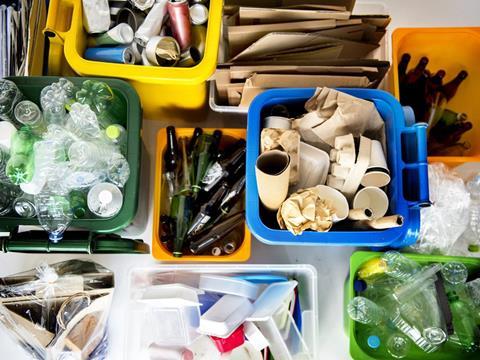
Is ‘Reduce, Reuse, Recycle’ out of date? In a new report, SPRING (a packaging-focused, cross-value chain thinktank) is proposing a new approach to packaging sustainability – with practical solutions at its core.
According to SPRING, the overarching goals of sustainable packaging, irrespective of geographical location or place in the value chain, should be to reduce greenhouse gas generation, enhance resource conservation, and minimise toxicity and contaminants. While it acknowledges that there is no ‘one-size fits all’ solution, the group says these are the key principles that should guide companies towards continual progress, rather than a fixed, ‘perfect’ endpoint.
SPRING outlines four Core Strategies for reaching these overarching goals. In terms of energy consumption strategies, the focus should be on reduction and transitioning the generation of energy to renewable resources that are not toxic or contaminating, according to the group.
The protection of water resources is also a core strategy identified in the report. SPRING adds that freshwater use should be minimised, and that water habitats should be maintained and returned to “pristine condition”.
SPRING emphasises the importance of choosing materials that balance functionality with low lifecycle environmental impacts. Throughout the development, production, use, reuse, and disposal of packaging, SPRING says that pollutants, toxic chemicals (including identified chemicals of concern), greenhouse gases, and other contaminants should be eliminated.
Expanding on its Decision Making Framework, SPRING acknowledges 10 external factors that impact almost all sustainable packaging decisions, which companies must understand and account for.
SPRING claims that factors that link with packaging production are the most scalable. From a Processing & Production perspective, companies should reportedly examine areas where efficiency can be increased, while accounting for opportunities to introduce or expand renewable energy use in both production and transit.
This also encompasses the Ecology & Environment category, with SPRING setting out some important considerations, such as the specific environmental concerns related to a company’s area of operations, the time period over which these impacts might appear, and the resources that can be committed to mitigation.
More difficult to scale, according to SPRING, are factors relating to psychological and sociological diversity, which require different approaches on a country-by-country and even state-by-state basis. For example, whether local incomes, employment patterns, and population distribution allow access to more expensive goods and non-necessities will influence the feasibility of reducing environmental impacts and increasing prices for companies in these markets.
In addition, the behaviour of consumers and how they dispose of packaging waste must be considered in the Decision Making Framework, notes SPRING. This will depend on existing solid waste management (SWM) infrastructures, as well as any plans to expand these, which impacts how consumers are able to dispose of packaging. The group adds that socio-economic trends in different markets will influence the applications of packaging, which could affect its end-of-life in terms of both consumer behaviour and available infrastructure.
Similarly, communication channels, political situations, and legislation also vary between regions. SPRING says that companies will need to consider with whom they need to communicate, such as governments, policymakers, and NGOs, and how this will need to be modified depending on cultural, political, and linguistic differences.
The next focus of SPRING’s model is Waste Minimisation. It places source reduction as the universal first step, while reuse should also be a significant aspiration – although this, like the Decision Making Framework, will rely more heavily on developmental, sociological, and geographical factors.
In its report, SPRING identifies ‘Recover’ as the “New Third ‘R’”, replacing recycling in the typical ‘Reduce, Reuse, Recycle’ triad of waste management. As new materials enter the market, new ways to enhance recovery are in development, SPRING claims.
SPRING views the ‘best’ choice of recovery method as always dependent on whichever process can generate the least amount of uncaptured CO2, while acknowledging that new tools will become available in the future and alter decision-making. The group, therefore, claims to take a neutral position on different technologies.
According to the report, cardboard, mixed paper, aluminium, steel, PET and HDPE meets it definition of materials that can undergo mechanical recycling, which includes a 25% post-consumer recycling rate and 60% availability of local collection resources in the USA.
Meanwhile, it identifies chemical recycling as a relatively new field, with many competing technologies and companies still in the ‘proof of concept’ or start-up phases. However, it adds that chemical recycling should have the same aims as mechanical recycling: a steady source of high quality, low contaminating materials.
SPRING suggests that industrial composting could be a useful recovery tool for hard-to-recycle packaging, particularly for foodservice or agricultural applications where separation of materials is difficult. However, the group does not recommend the blanket use of compostable plastic packaging as biodegradation can produce microplastics and greenhouse gases.
For waste to energy recovery methods, SPRING stresses that the viability of this method depends on geographical and socio-political context. While contentious in regions such as North America, it is reportedly integral to sustainable waste management practices in countries such as Japan, Germany, and Norway, demonstrating that decision-making on waste to energy infrastructure must be regionally specific.
Concluding the report, SPRING reiterates the importance of using a diverse range of approaches to sustainable packaging development, which it says is a complex process that “requires top-down involvement, focus, and leadership”.














